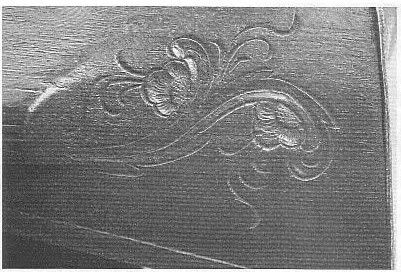Greetings all;
I've been contemplating building a transitional as my next project.
I was looking through the May 2004 issue of Muzzleblasts. On page 61, there starts a feature entitled "Flourishes of a Different Fashion". An early smooth rifle is shown.
The carving on this rifle seems unusual; it's an incised carving, but with more than seems to be typical detail. Further, several areas look to be "lowered" as opposed to the "raised" that we see so often.
If any of you most knowledgeable fellows get the Muzzleblasts magazine, please look at it and tell me your thoughts on this style.
I'm wondering if this might not be an interesting, albeit unusual style of carving for my transitional?
Your thoughts, (and advice), please.
Regards to all,
Jerry.
I've been contemplating building a transitional as my next project.
I was looking through the May 2004 issue of Muzzleblasts. On page 61, there starts a feature entitled "Flourishes of a Different Fashion". An early smooth rifle is shown.
The carving on this rifle seems unusual; it's an incised carving, but with more than seems to be typical detail. Further, several areas look to be "lowered" as opposed to the "raised" that we see so often.
If any of you most knowledgeable fellows get the Muzzleblasts magazine, please look at it and tell me your thoughts on this style.
I'm wondering if this might not be an interesting, albeit unusual style of carving for my transitional?
Your thoughts, (and advice), please.
Regards to all,
Jerry.












